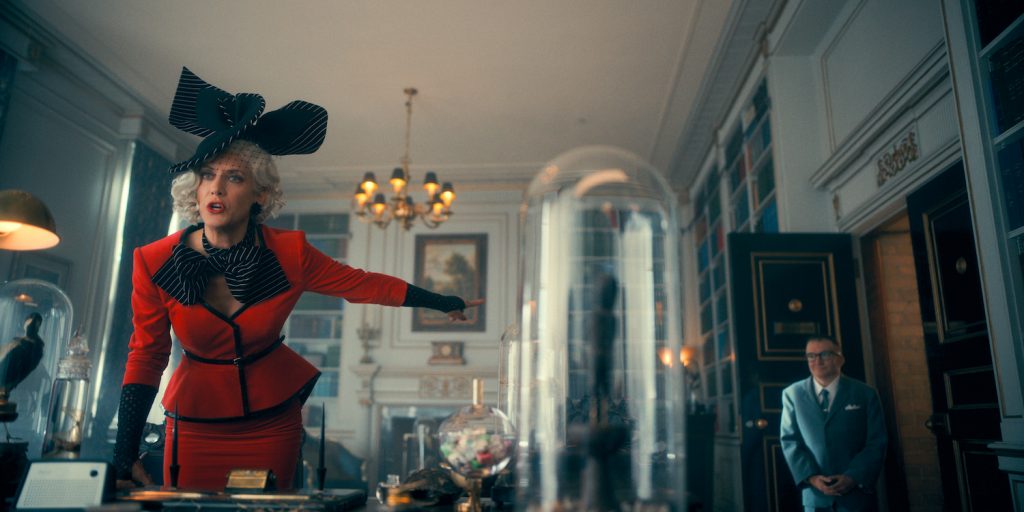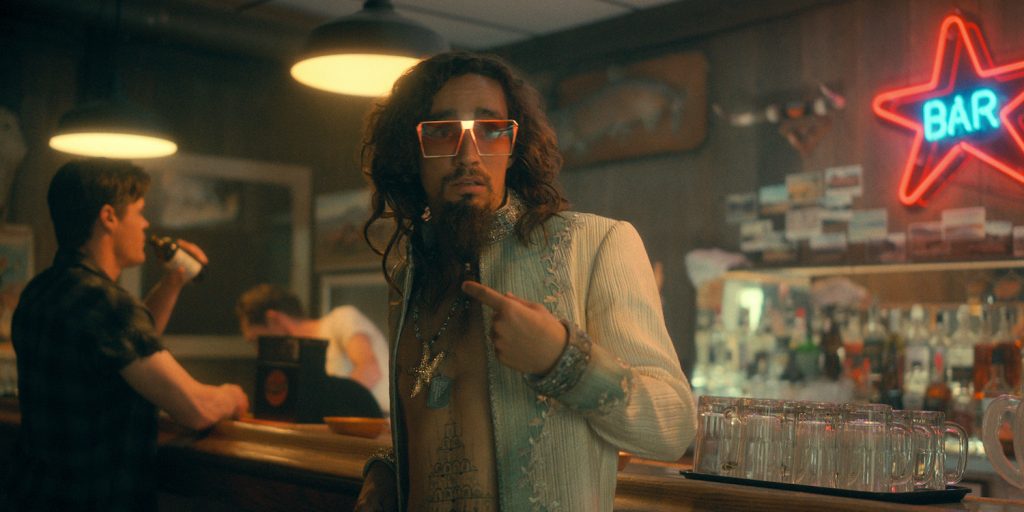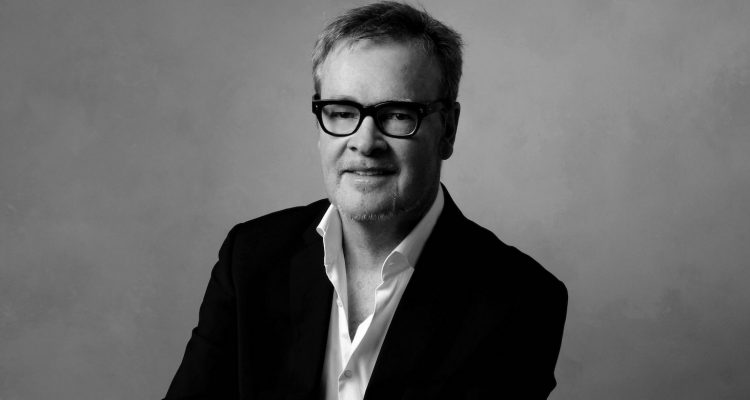Costume designer Chris Hargadon is having a standout year, Emmy nominated for Outstanding Fantasy/Sci-Fi Costumes category for his work on his work on Netflix’s The Umbrella Academy. The hit adaptation of the popular Dark Horse Comic centers around seven-super-powered-siblings. The gifted children, adopted by wealthy eccentric Sir Reginald Hargreeves (Colm Feore), were specifically trained to use their powers to save the world.
Following the death of Sir Hargreeeves in the first season, the siblings try to solve the mystery of how the world will end in a week’s time thanks to information gathered by Number Five (Aidan Gallagher), their teleporting and time jumping brother.
The first season finale shocked viewers with the revelation that the siblings were unable to stop the prophesied cataclysmic event. With moments before the Earth’s demise, the siblings locked arms with Number Five and jumped decades into the past.
In season two, a new mystery is discovered as the siblings arrive in 1960s Dallas, Texas. The era provided with Hargadon a great deal of creative freedom, designing everything from hippie attire of Klaus (Robert Sheehan) to the dignified clothing of the brave American Americans that protested and fought for their civil rights.
Hargadon does a phenomenal job of reflecting the characters’ quirks and personalities while staying true to the time-period and paying homage to the graphic novel. This is his first nomination for The Umbrella Academy and second career Emmy nomination, having previously been nominated for Outstanding Costumes For A Miniseries category for ABC/Disney’s Once Upon A Mattress.
Hargadon graciously chatted with Awards Focus on portraying racial tensions, the hidden S&M hints, and the Beatles’ eastern influences on Klaus.
Awards Focus: What was your inspiration for the Handler’s (Kate Walsh’s) show-stopping outfits? How did you come up with such iconic hats and silhouettes?
Christopher Hargadon: (Laughs) I felt I had full license to do a lot of stylistic influences since she’s a time traveling, psychotic killer. I’d find fabrics that I found interesting, and I wanted her to really cover the color spectrum.
Often when I sketched her outfits, I’d sketch a different hat. A hat is like a sculpture that completes the look, so it evolves as the costume develops. I had a wonderful milliner, Milena, who was able to do these wild things. In the handler’s case, I always wanted to go bigger, so we’d make it and then I’d want it twice the size.
Kate Walsh wanted a veil, and these are things DPs and directors don’t want because of lighting, and that type of thing. Kate, God love her, insisted on them. We’re usually never allowed to use them, you sort of present something, and they go, “no, no hats.” It’s always a bit of a battle. I really appreciate her standing up for them.

AF: With so many choices of styles to feature in the 60s, how did you choose the specifics looks, for example, Lila Pitt’s pinafore dress?
Hargadon: When we did the 50s, I wanted to make sure we did the silhouettes of the full skirt and fitted boddice, so that when we got into the 60s, it would be a real timeline jump into the Jackie Kennedy styles, which were fresh and new. With Allison and Sissy, I wanted to present a certain naivety of the time, a sort of wholesomeness. I had a very inspiring inventory of clothes for the background as well, and I could see what worked and make multiples of them.
AF: What’s the most telling detail you’ve added to reflect something about a character?
Hargadon: That would be the Handler’s vinyl belt because it’s gotten a bit of an S&M vibe to it. I think her veils are also a form of hiding and revealing, because she had this high voice and prim little way and then would reveal herself to be a vicious murderer.
And her level of intensity- she’d be very buttoned up and in control. She was very aware of her aesthetic appearance.
AF: How did each character’s new 60s outfits represent on aspect of themselves?
Hargadon: With Diego, I tried to represent the Latino culture through his dress, so I tried to do that subtly through color. Some of his colors were quite fiery, and he had a black shirt with an embroidery on it that shows a difference between his background and the rest of the cast. Luther went from a guy wearing a greatcoat to being a bodyguard, and his colors went from neutrals to blues, but he always looked presentable for work.
Klaus is just sort of into himself, and I went a little forward in time and brought his character into the later 60s when he got to the cult.
Allison was dead on 60s as an individual. She walked into those clothes like they were made for her, and some of them were. Vanya continued with the androgynous look the character had in season one. My idea was that she wasn’t a big size difference from Harlan, Sissy’s autistic son, so she took some of his clothes and wore them, since she appeared out of nowhere in a white tuxedo.
Hargreeves was kind of snakeskin James Bond, like a character out of an Ian Flemming novel. Really an international playboy, very different from his Edwardian look of season one.
AF: What was the inspiration for Klaus and his cult outfits? Was it the Beatles in India inspired, or Timothy Leary?
Hargadon: (Laughs) You know what, I had that in the back of my mind the whole time! The whole Beatles’ journey with the Maharishi Mahesh Yogi. It was actually scripted from the beginning that Klaus would be wearing a Sherwani.
A Sherwani is a southeast Asian dress jacket that goes to the knee and is beautifully embroidered. When I actually got my hands on one for Klaus to try on, I realized they are actually very structured and stiff. Very unlike his character, which is very fluid, lose, and free.
So, I kind of embarked on my own journey of building a Sherwani that would be specific to him. I found a fabric that had movement, and I loved the turquois blue colour for him and his cult, so all the cult people in North America ended up in that colour.

AF: It must have been great to revisit the 60s. There were so many fantastic styles from that decade that were just emerging, and the Beatles brought a lot of fashion from the east.
Hargadon: The 60s were a great time for fashion! I lived through the period, so it’s very alive inside of me. At the time when it all came out, it was just so different.
It was all about the rebellion of the Vietnam war and social awareness of young people. Not wanting to walk blindly into their future or being told what to do, and that sort of drug culture that emerged. It was a time of discovery, excitement, and originality where people started skating a claim in their own identity. Whenever I look back at that time, it’s still fresh and alive in me.
AF: The season highlighted racial tensions in the country, how was that reflected in the costumes?
Hargadon: Raymond Chestnut and Allison represented a very well-educated, middle class segment of society who wanted change and a better life for the African Americans of the time. It was very interesting because this was all shot during the George Floyd protests, so it felt like it was in sync with the situation. It was a great circle we were living through of strife and awareness. What I really wanted to represent with these characters was their dignity.

AF: We usually only see Five in his school outfit, so it must have been nice to dress him in something else as his older self.
Hargadon: His older self wears a suit as well, and we shot it during season one very quickly. I just tried to find a color that fit nicely into the scenario, but things are evolving for number five as well.
AF: What was the process for designing the costumes for the Sparrow Academy?
Hargadon: The Sparrow Academy takes place in a different timeline with a different family. I used inspiration from the graphic novel where they were in a red uniform. When it came to the screen test it was too stark, I inverted it to a darker jacket with trim.
AF: How did you maneuver costuming for the fight and stunt scenes?
Hargadon: Sometimes you patch things on the floor when they’re shooting but I’ll usually have doubles… sometimes up to a dozen of a single outfit. I had eight of Allison’s peplum outfit, and we made a lot of the Handler’s Burberry-like trench coats during the finale scene.
AF: Lastly, what was it like shooting during Covid?
Hargadon: Everything was closed, and I built everything out of fabric I already had. I did a lot of repurposing and found suppliers who weren’t open but had swatches I could test and then order online.
It was a whole new way of working. No hands on where you could touch fabric, but we managed and appreciated the networks who kept the ball rolling. We were tested for Covid every five days. It was hard, but we needed the content since it was the time everybody was watching Netflix!


